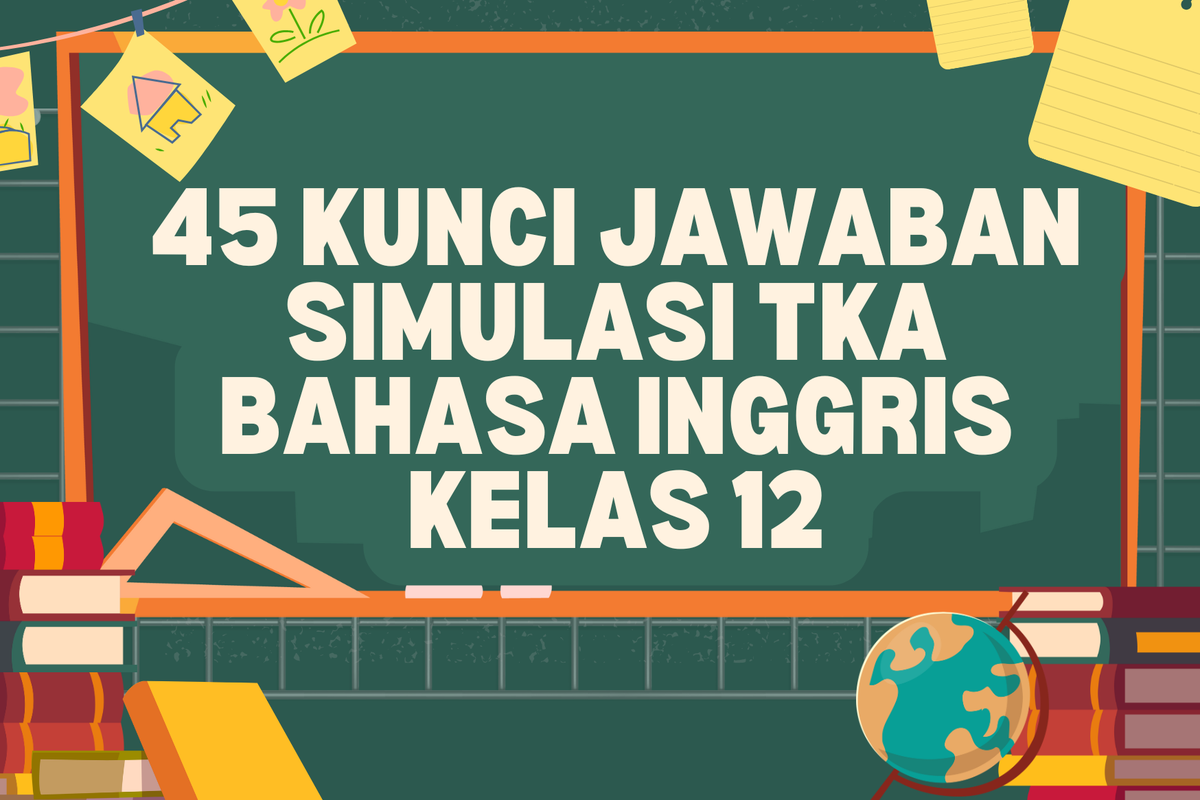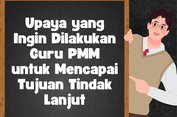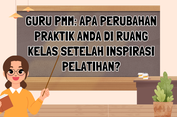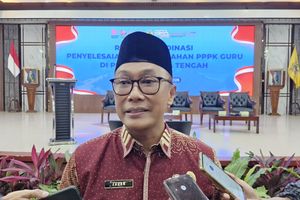45 Kunci Jawaban Simulasi TKA Bahasa Inggris Kelas 12

- He was jealous of Son Tinh’s victory
- He believed the King had lied to him
- He thought the princess loved him more
- He wanted to show off his power to the king
- He had promised to fight until death
Answer: A
23. After reading the text, we can see that Son Tinh and Thuy Tinh are different, but they also have some similarities. Decide if each trait shows a similarity or a difference.
- Both are not humans. (Similarity/Difference)
- They can control the elements. (Similarity/Difference)
- They love the King’s daughter. (Similarity/Difference)
Answer:
- Similarity
- Similarity
- Similarity
24. What does the phrase “kept his promise” in the text mean?
- Forgot about his decision
- Changed his mind about the wedding
- Did what he had promised to do
- Delayed the marriage for many days
- The King asked the princes to bring more gifts
Answer: C
25. What is the main lesson of the story?
(There is more than one correct answer. Click on every correct answer!)
- Accept defeat gracefully to prevent harm to others
- Be fair and follow the agreed rules in competitions
- Choose peaceful solutions rather than angry reactions
- Prepare honestly and present your gifts properly
- Respect leaders’ decisions and community agreements
Answer: A, C
This text is for questions number 26–29
Malin’s Big City Life: A Modern Tale
Malin had always dreamed of leaving his small coastal village. After graduating from high school, he moved to Jakarta with hopes of building a better life. He worked part-time jobs during the day and studied digital marketing at night. It wasn’t easy, but he slowly gained skills, built a client list, and eventually launched a successful online clothing brand.
Within four years, Malin’s name became known among young entrepreneurs. He started attending influencer events, sharing productivity tips, and talking about “humble beginnings”, though he rarely mentioned where he came from. At some point, he stopped returning his mother’s calls. He thought she wouldn’t understand his lifestyle now: brand deals, curated social media posts, and talk shows.
One day, Malin was invited to speak at a business seminar, streamed live across Indonesia. In the audience was a quiet woman in a simple kebaya, his mother, who had taken the long trip to Jakarta without telling him. She waited outside the venue, holding a basket of banana chips she used to make for him when he was little.
When she finally approached him near the stage, Malin stepped back. Cameras were everywhere, and the last thing he wanted was to be seen with someone who didn’t match the image he had built. He gave her a quick nod and turned away, pretending not to recognize her.
Later that night, a short video went viral: a young CEO ignoring an old woman who claimed to be his mother. Comments exploded with criticism, and people began to question the authenticity of his “humble” background. Sponsorships were paused. Interview requests stopped coming. Alone in his apartment, Malin stared at the screen, his face frozen in the moment he turned away.
26. What is the main message of the story?
- Staying true to your goals is more important than pleasing others
- Sometimes, ambition can push you to make difficult personal choices
- Building your image is part of surviving in a competitive world
- Success means little if it leads you to ignore those who supported you
- Being proud of your background can be hard when your life changes
Answer: D
Baca juga: Contoh Perkenalan Diri dalam Bahasa Inggris saat MPLS 2025
27. Which of the following best describe Malin’s character based on the passage?
(Select all that apply)
- Hardworking and determined
- Humble and proud of his roots
- Ambitious and goal-oriented
- Ashamed of his past and image-focused
- Disrespectful and quick-tempered
Answer: A, C, D
28. Determine whether the following statements are true or false based on the passage:
- Malin used to like banana chips made by his mother. (True/False)
- Malin avoided his mother in the public but not in the private. (True/False)
- Malin is cursed to be stone after ignoring his mother. (True/False)
Answer:
- True
- False
- False
29. What would likely happen if Malin didn’t ignore his mother, but treated her with respect in front of the public?
- People would question whether he was faking the moment for attention
- His mother would ask him to leave his business and return to the village
- He would lose brand deals for being too focused on family
- Netizens would mock him for having an uneducated parent
- It would strengthen his image as someone who truly came from humble beginnings
Answer: E
This text is for question number 30-35
A Whole New Jupiter: First Science Results from NASA’s Juno Mission
Juno was launched on August 5, 2011, and entered Jupiter’s orbit on July 4, 2016. The findings from the first data-collection pass—which flew within about 2,600 miles (4,200 kilometers) of Jupiter’s swirling cloud tops on August 27—are being published this week in two papers in the journal Science, as well as 44 papers in Geophysical Research Letters.
“We knew going in that Jupiter would throw us some curves,” said Scott Bolton, Juno’s principal investigator from the Southwest Research Institute in San Antonio. “But now that we are here, we are finding that Jupiter can throw the heat, as well as knuckleballs and sliders. There is so much going on here that we didn’t expect, that we have had to take a step back and begin to rethink this as a whole new Jupiter.”
Among the findings that challenge previous assumptions are those provided by Juno’s imager, JunoCam. The images show that both of Jupiter’s poles are covered in Earth-sized swirling storms that are densely clustered and rubbing together.
“We’re puzzled as to how they could be formed, how stable the configuration is, and why Jupiter’s north pole doesn’t look like the south pole,” said Bolton. “We’re questioning whether this is a dynamic system—are we seeing just one stage, and over the next year we’re going to watch it disappear—or is this a stable configuration where these storms are circulating around one another?”
Another surprise comes from Juno’s Microwave Radiometer (MWR), which samples the thermal microwave radiation from Jupiter’s atmosphere—from the top of the ammonia clouds to deep within the planet. The MWR data indicates that Jupiter’s iconic belts and zones are mysterious: the belt near the equator penetrates all the way down, while the belts and zones at other latitudes seem to evolve into different structures. The data also suggests that ammonia is quite variable and continues to increase as far down as the MWR can detect—several hundred miles or kilometers beneath the surface.
Prior to the Juno mission, it was known that Jupiter had the most intense magnetic field in the solar system. Measurements from Juno’s Magnetometer Investigation (MAG) indicate that Jupiter’s magnetic field is even stronger than expected and more irregular in shape. MAG data shows the magnetic field greatly exceeded predictions at 7.766 gauss—about ten times stronger than the strongest magnetic field found on Earth.
“Juno is giving us a view of the magnetic field close to Jupiter that we’ve never had before,” said Jack Connerney, Juno’s deputy principal investigator and the lead for the mission’s magnetic field investigation at NASA’s Goddard Space Flight Center in Greenbelt, Maryland. “Already, we see that the magnetic field looks lumpy—it is stronger in some places and weaker in others. This uneven distribution suggests that the field might be generated by dynamo action closer to the surface, above the layer of metallic hydrogen. Every flyby we execute gets us closer to determining where and how Jupiter’s dynamo works.”
Juno is also designed to study the polar magnetosphere and the origin of Jupiter’s powerful auroras—its northern and southern lights. These auroral emissions are caused by particles that gain energy and slam into atmospheric molecules. Juno’s initial observations indicate that this process works differently at Jupiter than it does on Earth.
Source: NASA.gov-Accessed on June 3, 2017
30. The topic of the text is ....
- The whole new Jupiter
- Data from the Juno Mission
- The most intense magnetic field in solar system
- The difference between Jupiter’s north pole and south pole
- The Jupiter’s atmosphere
Answer: B
Baca juga: Contoh Perkenalan Diri dalam Bahasa Inggris saat MPLS 2025
31. The following statement is NOT TRUE according to the passage ....
- Juno launched on Aug. 5, 2011, entering Jupiter’s orbit on July 4, 2016.
- First data-collection of Juno mission published in two papers in The Journal Science.
- Both of Jupiter’s poles are covered in Earth-sized swirling storms that are densely clustered and rubbing together.
- The Jupiter’s belt near the equator penetrating all the way up.
- The Jupiter’s magnetic field is about 10 times stronger than the strongest magnetic field found on Earth.
Answer: D
32. The writer organizes the text by ....
- Explaining reasons Juno mission launched to Jupiter
- Comparing the condition of Jupiter and Earth
- Describing some of Jupiter’s data from Juno mission
- Showing how Juno mission plays an important role in outer space exploration
- Sequencing the moment when JunoCam captured the view of Jupiter’s atmosphere
Answer: C
33. The sentence “Jupiter would throw us some curves” means that ....
- Jupiter would show us its odd atmosphere
- Jupiter would rotate abnormally
- Jupiter would confuse scientists by doing something unexpected
- Jupiter would give a mysterious view of its iconic belt
- Jupiter would show us its auroras
Answer: C
34. The word “lumpy” is closest in meaning to ....
- Thick
- Gracious
- Upheaval
- Slight
- Flimsy
Answer: A
35. Determine whether the following statements about Jupiter’s storms and magnetic field are TRUE or FALSE based on the text!
- Both of Jupiter’s poles are covered in large, Earth-sized storms.
- The magnetic field of Jupiter turned out to be weaker than scientists had predicted.
- Juno’s magnetometer detected a magnetic strength of about 7.766 gauss.
- Jupiter’s magnetic field is smooth and evenly distributed across the planet.
- The storms on Jupiter’s poles are all identical in size and shape.
Answer:
- True
- False
- True
- False
- False
This text is for questions number 36-39





















































